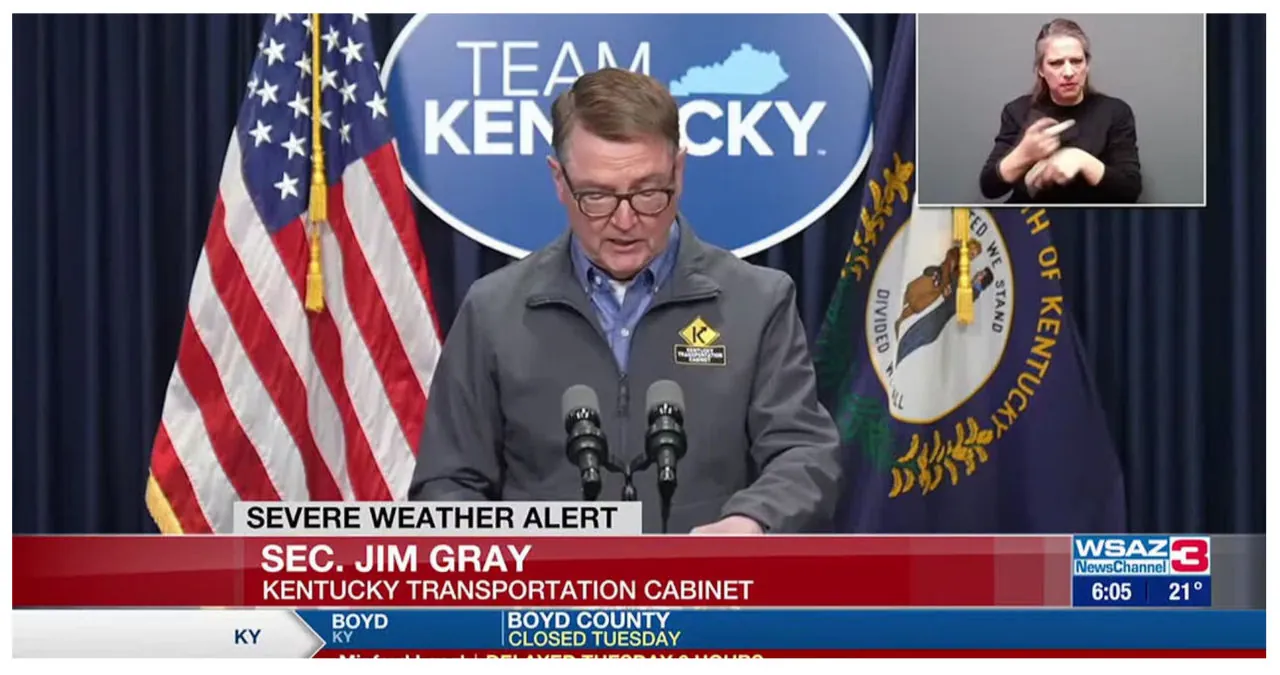Kentucky experienced two waves of snowfall on Monday, covering the state in a white blanket.
The Kentucky Transportation Cabinet reported that as of 5:30 p.m., state highways in Bath, Boyd, Carter, Elliott, Fleming, Greenup, Lewis, Mason, Nicholas, and Rowan counties are mostly clear. Crews are actively patrolling and addressing isolated icy spots as necessary.
Crews will continue to patrol routes overnight as additional snow is expected. With lows tonight around 9 and pavement temperatures still below freezing, it is crucial to ensure the safety of the roads.
Officials are urging drivers to make good decisions due to the likelihood of refreezing and slow-acting salt during the Tuesday morning commute.
-
- If it’s not essential travel, please stay home.
- If you must be on the road, slow down – that’s been one of the biggest factors in crashes today, police say.
- put down the phone
- keep plenty of space between vehicles
- pack an emergency kit
- buckle up
Tips for driving during snow and icy conditions according to the Kentucky Transportation Cabinet:
1. Slow down and maintain a safe distance: It is crucial to reduce your speed and keep a safe distance from other vehicles. This allows you to have more time to react to any potential hazards on the road.
2. Be cautious while braking: When driving on snow or ice, it is important to brake gently to avoid skidding. Apply light and steady pressure on the brakes to slow down gradually.
3. Accelerate gradually: When starting from a stop or accelerating, do so slowly and smoothly. This helps prevent your tires from spinning and losing traction on slippery surfaces.
4. Avoid sudden maneuvers: Abrupt turns or lane changes can cause your vehicle to lose control on icy roads. Make sure to signal early and make gradual movements to maintain stability.
5. Use your headlights: Visibility can be significantly reduced during snow or icy conditions. Use your headlights to improve visibility and make your vehicle more visible to others.
6. Clear your windshield and windows: Before driving, ensure that your windshield and windows are clear of snow and ice. This will provide you with a clear view of the road and prevent any obstructions.
7. Prepare for emergencies: Carry a winter driving kit in your vehicle, including items like a snow shovel, ice scraper, blankets, flashlight, and extra clothing. It is also advisable to have a fully charged cell phone and some snacks or water in case of an emergency.
Remember, driving in snow and icy conditions requires extra caution and patience. Following these tips can help ensure your safety and the safety of others on the road.
-
- Alter travel plans to avoid driving during the peak of weather activity.
- Drive with a full tank of gas and pack an emergency car kit that contains essential items like blankets, ice scrapers, jumper cables, a flashlight, a cell phone charger, non-perishable snacks and a first aid kit should you get stranded on the road.
- Winterize your vehicle. Check your car battery, tire pressure and tread, and brakes. Ensure your heater, defroster, headlights and windshield wipers are working properly.
- When snow and/or ice are on roadways, drive slowly no matter what type of vehicle you drive. It takes more time and distance to stop your vehicle in poor weather, so brake early and slowly.
- Pay attention to weather advisories and allow more time to travel for routine commutes. Expect delays.
- Slow down when approaching intersections, off-ramps, bridges or shaded areas. These are all candidates for developing “black ice” – a thin coating of clear ice that can form on the pavement surface that may be difficult to see.
- Maintain a safe distance from snowplows and other heavy highway equipment, and do not pass snowplows on the shoulder.
- Eliminate distractions while driving, such as using a phone and or eating, and always buckle up.
If you come across a downed power line, it is essential to take immediate action to ensure your safety. Here are the steps you should follow:
1. Stay away: Keep a safe distance of at least 30 feet from the power line and anything it may be in contact with. This includes vehicles, trees, and fences. Remember, electricity can travel through objects and the ground, so it’s crucial to maintain a safe distance.
2. Call for help: Notify the local authorities or your power company as soon as possible. They have trained professionals who can handle the situation safely. Do not assume that someone else has already reported it.
3. Don’t touch anything: Never touch a downed power line or anything it may be touching, such as a vehicle or tree. Even if the power line appears to be inactive, it could still be energized and pose a serious threat.
4. Warn others: If you see a downed power line, warn others in the vicinity to stay away from it. Use verbal communication or make sure to contact the authorities so they can alert others in the area.
5. Stay inside your vehicle if a power line falls on it: If you are inside a vehicle and a power line falls on it, stay inside until help arrives. Warn others to stay away and call emergency services immediately. Exiting the vehicle can put you at risk of electric shock.
Remember, electricity is extremely dangerous, and it’s always better to be safe than sorry. By following these steps, you can help ensure your safety and the safety of those around you when encountering a downed power line.
-
- Report it to your local utility company
- Do not try to clear it yourself
- Steer clear and avoid anything touching downed lines, including vehicles or tree branches.

